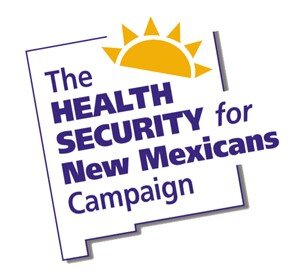We need to think of our health care system as a jigsaw puzzle. Each piece is connected to other pieces. The puzzle cannot be solved without figuring out how the pieces are connected to each other.
Thus, just gaining access to health insurance will not address hospital costs, pharmaceutical drug prices, the frustrating (and costly) administrative burden on health care professionals, or increasing patient out-of-pocket responsibilities, which may prevent people from getting the care they need.
Our state needs to come up with a coordinated solution to address both access and cost. The jigsaw puzzle needs to be solved.
For over two decades, the Health Security for New Mexicans Campaign, currently a coalition of 170 diverse organizations and thousands of individuals, has been working on a homegrown systemic New Mexico solution. We have reached out to all areas of the state, seeking feedback on a simple idea: let’s set up our own health plan that automatically covers most New Mexicans, offers comprehensive services and freedom of choice of provider, and is overseen by a geographically representative citizens’ board (like a co-op). Private insurance may play a supplemental role, as it does in many European countries (and as is the case with traditional Medicare).
The Health Security proposal requires a major paradigm shift, one that combines and coordinates the key elements—the different puzzle pieces—of our health care system.
According to three independent New Mexico studies (the most recent in 2020), the Health Security approach will slow the rate of increase of health care costs, ensure coverage for all state residents, and simplify what has become a complex and administratively burdensome system that frustrates health professionals and patients alike.
In 2021, the New Mexico Legislature provided funding to develop the details of the proposed Health Security Plan. This funding enabled the Office of Superintendent of Insurance to hire consultants to engage in key research areas during the initial year of the design process.
While the 2019 Health Security Act provides important guidelines for creating the Health Security Plan, there are many details that still need to be fleshed out, including enrollment, hospital and health professional payment systems, appeals systems, IT/medical records, accountability systems, and more. Decisions will have to be made about these details before the plan can begin offering coverage. Once designed, a fiscal analysis can then be conducted on the plan as designed— not as projected.
If New Mexico is to develop a systemic solution to our health care crisis, it is important to understand how these different key elements impact each other. Unlike a jigsaw puzzle, however, these critical components of our health system require gathering information about state and international experiences, learning from them and then deciding what would work for our state, keeping in mind how each piece fits together and impacts access and cost.
During the 2022 legislative session, the superintendent of insurance presented very promising results on the three critical research topics selected.
Topic 1. Investigation of federal waivers and agreements that provided key information regarding prospective plan enrollment numbers.
Initial results: The report describes various approaches to receiving federal waivers or agreements, focusing on Medicaid and Medicare, the two largest programs in New Mexico, while ensuring the protection of recipient entitlements.
Topic 2. Exploration of provider payment system methodologies that focused on whether it is possible to standardize our complex multi-layered payment system, as many European countries have done.
Initial results: The report describes various options to develop such a coordinated system so providers and health facilities do not have to deal with multiple different charges for the same service.
Topic 3. Research on the feasibility of creating a global budget program for hospitals, a payment system in which hospitals receive a predictable, sustainable revenue stream instead of depending on an unpredictable, complicated charges system. (Maryland’s global budget program has been very successful.)
Initial results: Two reports, written by separate consultants, concluded that New Mexico could greatly benefit from such a system, whose creation can be funded by the Centers for Medicare and Medicaid Services.
In sum, the reports describe possible paths to take that will address both access and cost issues.
But more research is required.
Recently, the legislature increased the funding for this coordinated approach. The appropriation will enable the superintendent to follow up with the suggestions made in the initial reports and to investigate two additional critical topics: how to address rising drug prices and how to create a workable inter-operational IT system so that no matter which plan you have, the provider you go to will have your complete medical history.
While the design project clearly is a multi-year effort, the research on some of these pieces in the health care puzzle can lead to more immediate solutions.
For example, a hospital (and clinic) task force could be created this year to figure out how a global budget system could work in New Mexico, with the goal of applying for startup funds from the Centers for Medicare and Medicaid Services. It would be possible to create a second task force to explore the creation of a program to negotiate drug prices that could benefit all New Mexicans.
Thus, the Health Security Plan design process will enable New Mexico to phase in key pieces of the puzzle like hospital and drug costs, keeping in mind how these programs would impact the other jigsaw pieces of the health care system and how they would align with the systemic reform the Health Security approach will ultimately bring.
New Mexico has been given an extraordinary opportunity to carefully design a workable solution to our health care crisis, one that is appropriate for our large, mostly rural state with its small population.














